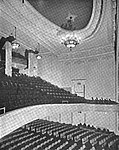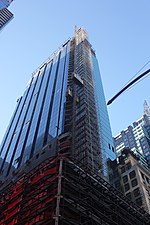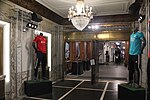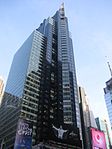Statue of George M. Cohan
1959 establishments in New York City1959 sculpturesBronze sculptures in ManhattanGranite sculptures in New York CityManhattan building and structure stubs ... and 6 more
Monuments and memorials in ManhattanNew York (state) sculpture stubsOutdoor sculptures in ManhattanSculptures of men in New York CityStatues in New York CityTimes Square

A bronze statue of composer George M. Cohan, by artist Georg John Lober and architect Otto Langman, is installed at Duffy Square in Manhattan, in New York. Cast in 1959 and dedicated on September 11, 1959, the statue rests on a light Barre granite pedestal, which is set on a dark Barre granite base.
Excerpt from the Wikipedia article Statue of George M. Cohan (License: CC BY-SA 3.0, Authors, Images).Statue of George M. Cohan
West 46th Street, New York Manhattan
Geographical coordinates (GPS) Address External links Nearby Places Show on map
Geographical coordinates (GPS)
| Latitude | Longitude |
|---|---|
| N 40.758758333333 ° | E -73.985144444444 ° |
Address
George M. Cohan
West 46th Street
10036 New York, Manhattan
New York, United States
Open on Google Maps










